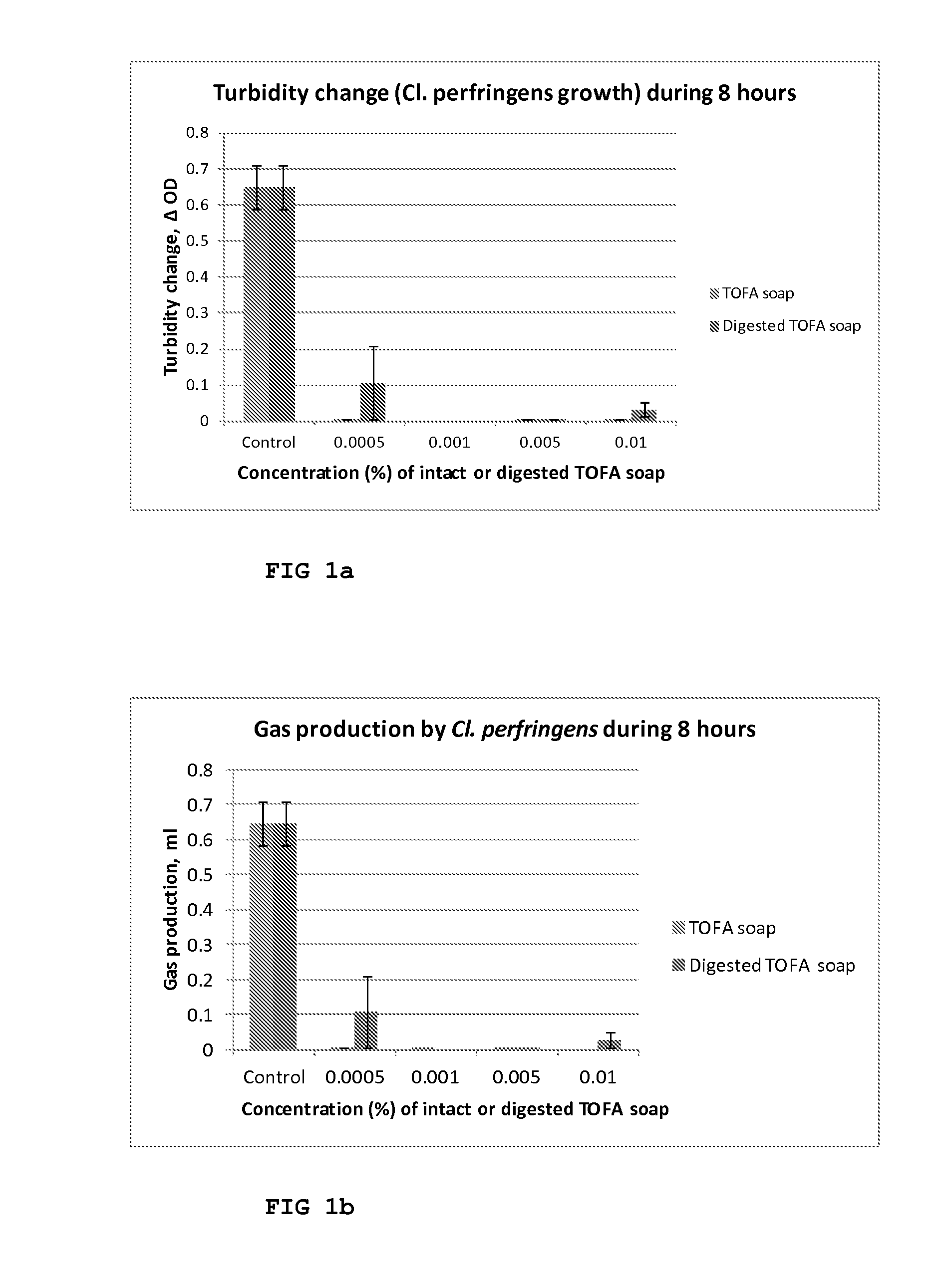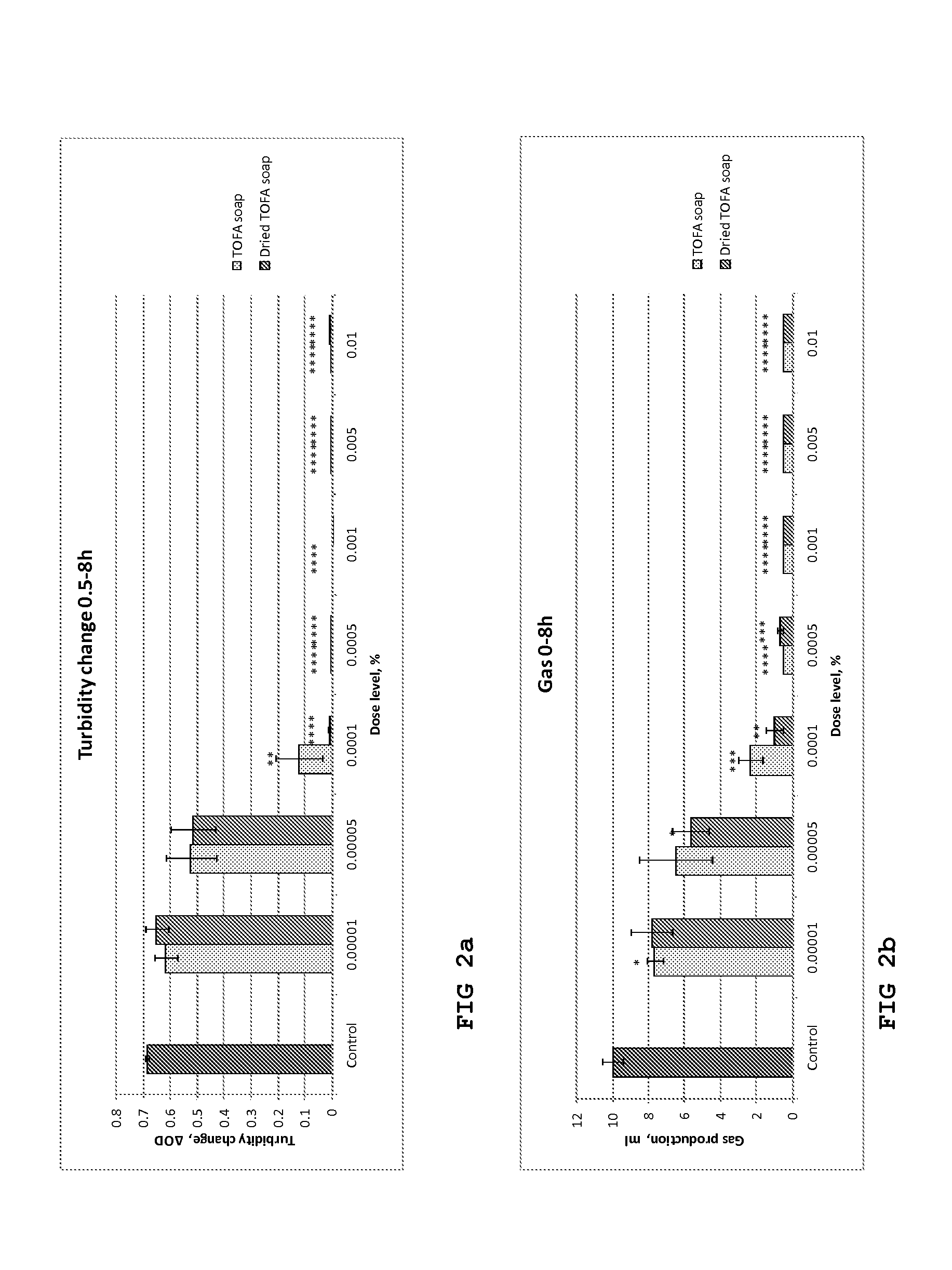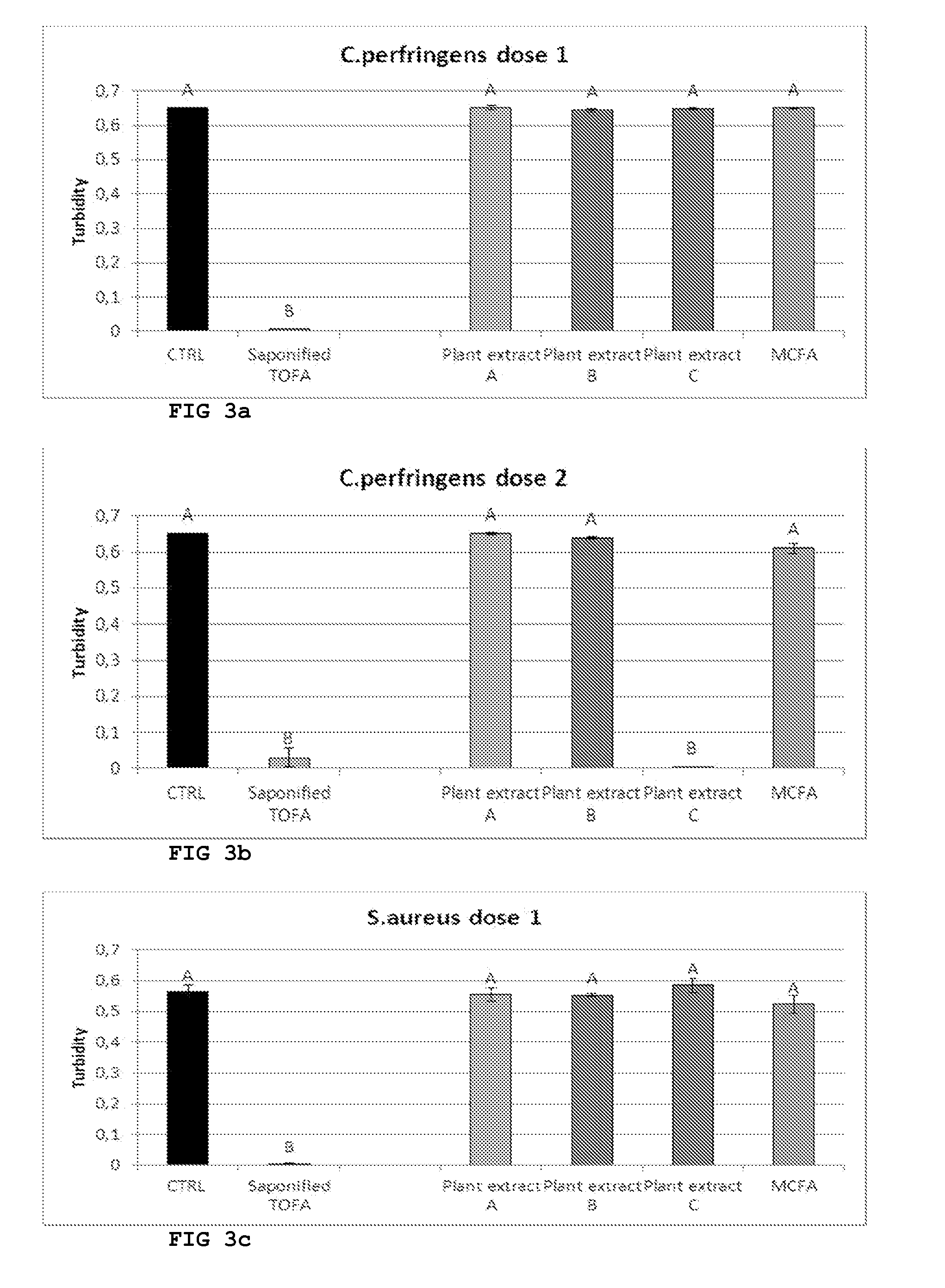Saponified tall oil fatty acid for use in treatment and animal feed supplements and compositions
a technology of tall oil and fatty acid, which is applied in the field of modified tall oil fatty acid, can solve the problems of significant losses in animal growth and production
- Summary
- Abstract
- Description
- Claims
- Application Information
AI Technical Summary
Benefits of technology
Problems solved by technology
Method used
Image
Examples
example 1
Pathogen Inhibition Test
[0058]Clostridium perfringens is a pathogenic bacterium that causes necrotic enteritis in broiler chicks and other species of poultry. This experiment was conducted to study the inhibition of Cl. perfringens by saponified TOFA with 5% resin acids.
[0059]The saponified TOFA was manufactured by adding 140 mg of NaOH (sodium hydroxide) to 1 gram of TOFA, adding enough water to adjust the total dry matter (TOFA) percentage of the mixture to 18-20%, heating the mixture to +90° C., keeping the temperature at +90° C. for 120 minutes, during which time the mixture was gently stirred at 15 min intervals.
[0060]The efficiency of untreated and digested test compounds was tested in a Cl. perfringens growth inhibition test that measures both the turbidity of the clostridial culture medium as a result of increased number of bacterial cells in a unit volume of medium, and the cumulative gas production during the simulation.
[0061]Preparations of TOFA with 5% resin acids were p...
example 2
Pathogen Inhibition Test
[0076]This experiment was conducted to study the inhibition of Cl. perfringens by saponified TOFA with 7% resin acids. The saponification of the TOFA was conducted as described in Example 1. The efficiency of liquid and spray-dried TOFA soap was tested in a Cl. perfringens growth inhibition test that measures both the turbidity of clostridial culture medium as a result of an increased number of bacterial cells in a unit volume of the medium, and the cumulative gas production during the simulation.
[0077]Preparations of TOFA with 7% resin acids:
[0078]1. Liquid TOFA with a 20.4% dry matter content
[0079]2. Spray dried saponified TOFA
[0080]The spray-dried saponified TOFA was tested in the present trial in order to study the resistance of the product to drying and to detect any possible loss of efficacy due to the spray drying.
[0081]The efficiency of TOFA against the growth of Cl. perfringens was tested at eight concentrations of the dry matter of TOFA: 0% (Control...
example 3
[0088]Pathogen Inhibition Test
[0089]This experiment was conducted to compare the efficacy of saponified TOFA with 8.5% resin acids and competing products for their ability to inhibit the growth of pure cultures of three Gram-positive pathogens: Clostridium perfringens, Staphylococcus aureus and Streptococcus suis in vitro. The competing products were commercial natural plant extracts and a medium-chain fatty acid product. Plant extracts A-C are merchandised to have inhibitory effects against Gram+ pathogenic bacteria and they can be used e.g. in management of coccidiosis risk. The saponification of the TOFA was conducted as described in Example 1. Before the simulation, the bacteria were grown overnight as pure cultures in their specific growth medium. The bacterial cultures were used as inoculant in the experiment
[0090]Products and product doses are presented in Table 1.
Dose 1Dose 2Product(kg / ton of feed)(kg / ton of feed)Saponified TOFA 8.5% resin acids0.250.50Plant (Oregano) extrac...
PUM
| Property | Measurement | Unit |
|---|---|---|
| temperature | aaaaa | aaaaa |
| temperature | aaaaa | aaaaa |
| temperature | aaaaa | aaaaa |
Abstract
Description
Claims
Application Information
 Login to View More
Login to View More - R&D
- Intellectual Property
- Life Sciences
- Materials
- Tech Scout
- Unparalleled Data Quality
- Higher Quality Content
- 60% Fewer Hallucinations
Browse by: Latest US Patents, China's latest patents, Technical Efficacy Thesaurus, Application Domain, Technology Topic, Popular Technical Reports.
© 2025 PatSnap. All rights reserved.Legal|Privacy policy|Modern Slavery Act Transparency Statement|Sitemap|About US| Contact US: help@patsnap.com



